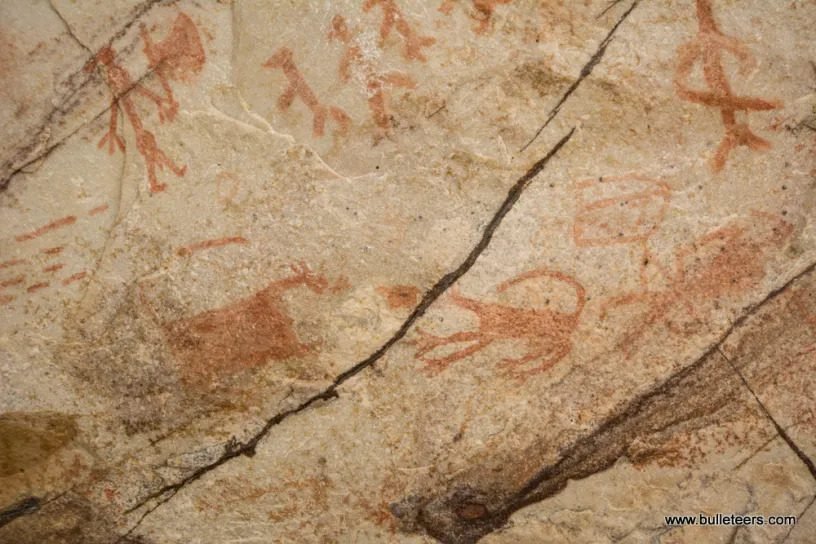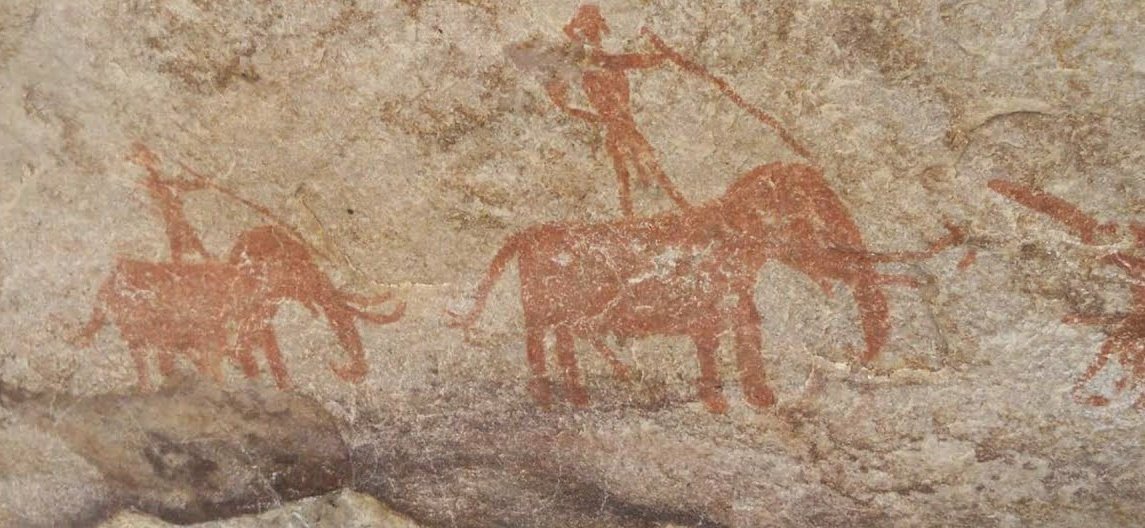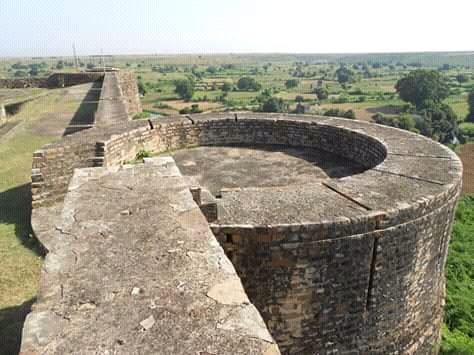Pahargarh Caves: Paintings of the Ancient Legacy


Pahargarh Caves, therefore, are a quite difficult to grasp yet a massive archeological site located in the interiors of Madhya Pradesh, India, surrounded by the monotony of modern way of life they hide an amazing collection of prehistoric paintings and other remainders in the rocky surface compared to other nicely-acknowledged cave websites in Ajanta, Ellora or even Bhimbetka, the Pahargarh Caves remain partially obscure to the public and cause a sense of mysteryand suspense. These marvelous caves hence endowed with historical paintings would give us an excellent prohibition to the lives and religious practices of mankind that inhabited this region in early man’s era. As the symbol of the artistic presentation and the social culture of those ancient individuals, the Pahargarh Caves should be more even Touted.

This blog will guide you through the formation and evolution of the pahargarh- Caves, starting with their pre-history as a dwelling place for Neanderthals and primitive man, then through their history as a tourist attraction up to the present day and including the future use as an archeological site for historical and scientifc discovery. It’ll additionally getacquainted with the physical trip to those faraway caves, which in its turn is an adventure through the rough and picturesque terrains of Madhya Pradesh. At some point, we can look back on the significance of those cave for instance in light of India’s extensive historical past in addition to the measures being taken to ensure their preservation for generations to come.

History
The history of the Pahargarf Caves dates back to heaps of years, to the period that could be referred to as pre-historic in a true sense, a period when the first ancestors of today have been still dwelling in this part of the Indian sub-continent.Those caves are assumed to date back to Mesolithic period somewhere between 10,000 and 8,000 BCE, which ranks it as one of the most ancient human settlements in India. The rock artwork inside the discovered caves is a shiny representation of the lives of those people of early ages of their beliefs and environment which offers quite an incredible window to look into the beyond of their living.

Mesolithic period, or center Paleolithic period was a time of certain significant changes and developments in the societies of early humans. Over the duration of this epoch, people began to extend extrasuperior equipment and methods of hunting, foraging and developing art This can be evidenced by the paintings made in the Pahargarh Caves that depict hunting, domestication of animals and communions. When these artworks were produced people used natural pigments which stem from minerals and plants and surprisingly, these have stood the test of time.
The implication of the Pahargarh Caves fed beyond the graphic symbols painted on its walls and ceiling It was, in its physical feature, proved that these caves were no longer just dwelling places but also social –religious centers. The fact that the ceremonial motifs and logos are used inside the caves it can be inferred that these caves were used for ceremonial reasons such as a site for meditation or prayers. In the course of years, the modern civilization evolved, and with its dynamics, changed and new cultures evolved over and over, which left an imprint of the new generations on the cave.

It became a breakthrough in the mid-twentieth century when Pahargarh Caves were discovered and they revolutionized idea about India’s prehistoric past. Before Pahargarh there werelittle insights into the inhabitants of this part of the world in the early Period of man, butthe art works on the rocks signified the existence of this early human civilization. New and refined, the art of the cavemen was a level of skill and planning beyond what early human beings were thought capable of by triumphing assumptions.
The importance of the Pahargarh Cave is further enhanced by emphasising on their geographical structure- the fact that they are pioneered and located at a relatively distant territory contrasting to other well knowncave sites in India, which may often be found close to main transport arteries or other services of civilization, the Pahargarh Caves are sited in a remote impassable part ofMadhya Pradesh, detached from other significantpopulation centers. It has contributed to the preservation of the caves an their art that is protected from time and effort by people. however, it has additionallycontributed to their relative obscurity, as few people outdoor of the archaeological community, know about their lifestyles.

Journey
The trip to the Pahargarh rows Caves is a very realistic one as it gets the vacationers through the absolute wilderness of the bare land of Madhya Pradesh where one gets the feeling that they are in a different world at different time with different culture. Located close to the village of pahargarf in the morena district, those caves are difficult to access by automobile and one has to undertake trekking over difficult terrains. For the ones who make the journey, but, the praise is a rare opportunity to see India’s nature beauty and historic performance.
The starting point for most visitors could be the city of Gwalior that is a historical city in Madhya Pradesh which is popular with a magnificent fort. Gwalior is very well connected by road, rail and air with other parts of India, it is, therefore, right place to begin an excursion to the Pahargarh Caves. While on tour to visit the Pahargarh village travelers have to cover a distance of approximately 80 Km on the street from Gwalior. The drive is about round two to three hours and most of the time, it nourishes pass through a few fields, forests, and other villages.

The building density continuously subsides as the street runs deeper into the Morena district, and the panorama starts changing and becomes more rough and natural. Hills rise steeply here and vegetation is much thicker which gives an indication of the gloomy caves ahead. The subsequent degree of the excursion lies when the vacationers attain the village of Pahargarh, after which one has to go away the automobiles and maintain strolling alongside a slim trail that starts off steeply upwards into the hills. This last part of the journey is a journey of moderate concern, endurance and sense of travel.
The visiting to the location pass through some of the most beautiful and unexplored areas in Madhya Pradesh especially the Pahargarh Caves. It gently winds through the areas with the thickets of the dense forest, passes between the rocks and cliffs and offers the stunning views of the surrounding hills and valleys. in parallel to that, it is also viable to encounter several types of animals that live in the area such as deers, monkeys, and many kinds of birds. Indeed, the natural setting of the place complemented with isolated feature makes the place both non-violent and thrilling.

However when one approaches the caves, the panoramaturn into even more dramatic, with large cliffs and deep gorges providing an excellent backdrop to the archaeological location. The cave themselves are dug into rocky slope and the entrance and their presence in partially concealed by vegetation and shadow that is cast by the outcrop of cliff. The element of expectation grows stronger as one approaches, with the realization that beneath such ordinary appearance of the rock status there are history and art hidden to be revealed.
After reaching the caves the result is one of wonder and amazement. The Lysefjord of Norway is an excellent example of cave paintings where the exterior appearance of the caves is all weathered and rough, but once inside the world is coloured and filled with creativity for at least a few thousand years. The partitions of the caves are embellished with rock artwork work; some degenerated and others nonetheless vibrant portraying different scenes in a deserved previous period. As physically demanding the trip to the Pahargarh Caves is, it also means a journey through time, the historical artworks and the accompanying site transport the visitors to the age of early human civilization.

Excavation
The process of the Exhumation and look at of the Pahargarh Caves were a slow and careful model, which is characteristic of the process of studying and preserving historic rock art in a remote and delicate climate. the firstsystematic attempts to document and study the caves became during the fifties while a team of the Archaeological Survey of India carried out first surveys in the area. those early explorations have been constraint and, broadly speaking, aimed at identifying and describing the rock artwork in the caves.
The first finds at Pahargarh were aschism as well as challenge. The available rock paintings are many but have been undergoing restoration exercise; some of them having lost almost all their colorations while others have still retained their initial colors as well as details. The ASI team carefully recorded this artwork: images, sketches, and special notes in order to get a complete description of the website online. It is worth to mention that the size and the intricacy of the art work, which covers two caves and several shelters, posed a rather greater difficulty to the archaeologists, who had to work step by step not to leave anything unnoticed.

Because of these excavations the researchers were able to capture more layers of history which showed that there is evidence of people living in the area since Mesolithic period. Also all kinds of stone equipment, pottery sherds and other artifacts seen inside were found to be giving information about the daily existence of earlier occupants of the cave. Thus, the above mentioned findings revealed that the Pahargarh Caves were not only art galleries but also living, working and playing theaters of early humans.
Perhaps, one of the most significant discoveries, which was made in the course of the excavations, lay in the fact that most of the rock paintings featured elements of ceremony and symbolism. These motifs, will refer to the geometric figures, the shapes without clear representational symbolism, and the stylized figures flattened into triangles and circles hint at the possibility that the caves of the region could have been non secular or non secular sanctuary for his or herinhabitants. as to the that means of these symbols, its a matter of debate among students, however they could be thought to symbolize a form of neolithic art, maybe concerned with hunting magic or animism.
Some challenges encountered during the continued excavation and study of the Pahargarh Caves include among them; the location of the site and the fragile nature of the petroglyphs. The caves are located in an area that is geometrically hard to access with limited resources that can be put into use in terms of archaeological exploration. The rock art work, buried to the factors for heaps of years, are prone to similar degradation, primarily from natural causes such as weathering and growth of shrubs.

In order to respond to these challenges, the conservationists and archaeologists have used a lot of measures toward the retention of the Pahargarh Caves for the future generation. theseefforts include the setting up of shield barriers to protect oneselves from direct sunlight and rain, careful extrication of aggressive plant species that cause erosions on the rock surfaces, and adoption of excellent techniques in cleaning or conservation of the pigments used intracings. despite such efforts, the continuing responsibility of managing the Pahargarh Caves remains an unglamorous, difficult and never-ending task which demands regular commitment and constant change from the toleration of conditions.
Conclusion
The paintings of the Pahargarh Caves palaeo-art are much more than a depiction of the art of prehistoric humans: they are evidence of people’s creativity, their religiousness, their determination to survive. These caves located at the heartland of India in the state of Madhya Pradesh create an insight about our ancestors and their life style, their relation with nature and the art they put up. Nonetheless, the Pahargarh Caves are not very famous, but they have their unique importance in the map of Indian archeology and are the symbol of centuries’ testimony.
Kilfully, as more and more of these ancient sites are excavated and studied, it becomes more apparent that the Pahargarh Caves are some of the most deserving of the extra measures of protection. Although this isolation has helped the ancient treasures to be preserved, this is one of the biggest problems in terms of access and preservation of the two landmarks. This continuous work by the archaeologists and conservationists’ help preserve the artifacts for future generation to learn from, cherish and be motivated by.

The Pahargarh Caves are much more than the rock shelters that are located in the region because they offer a look into the past. These drawings created on the caves’ walls thousands of years agoare still inspiring and evoking the memories of our ancestors and the importance of art in people’s lives. As the work for its conservation goes on, the Pahargarh Caves must be given the place they should occupy in our country as well as in the center of our culture linking the past and the present.


